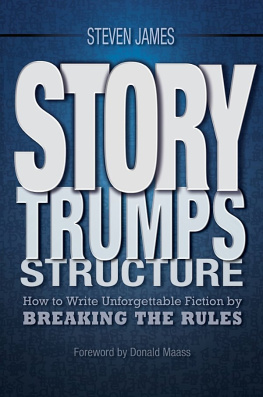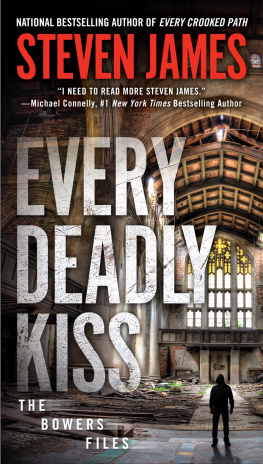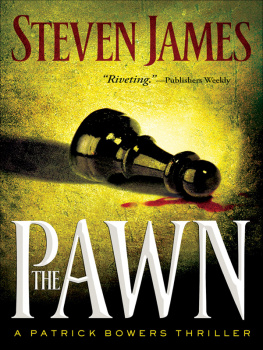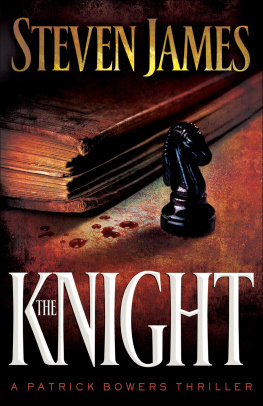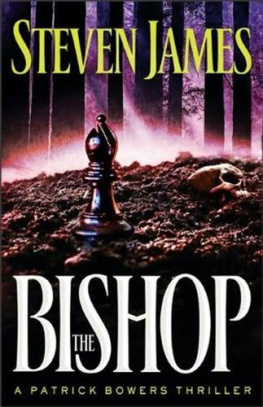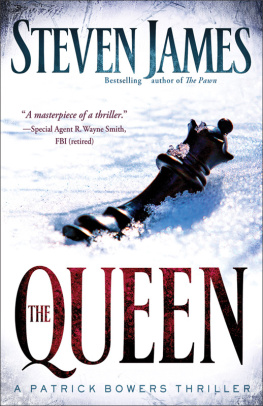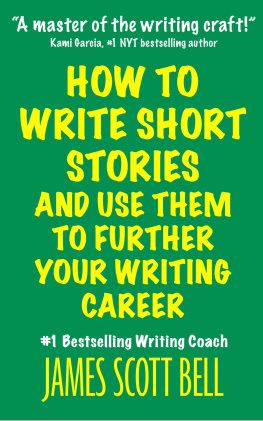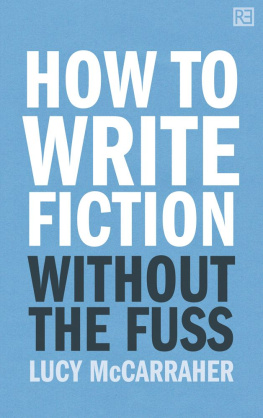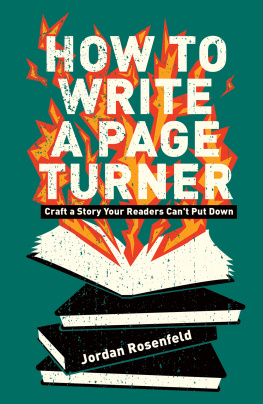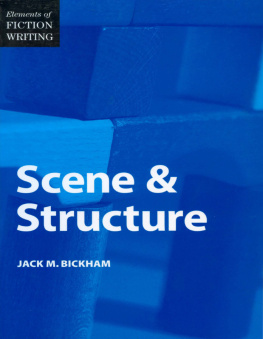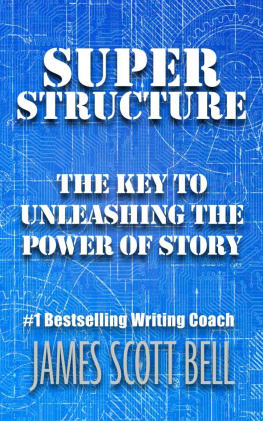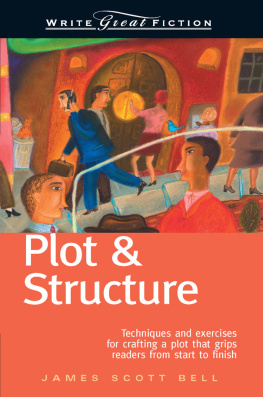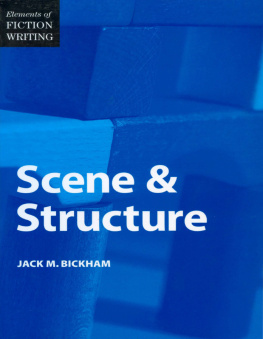STORY
TRUMPS
STRUCTURE
How to Write Unforgettable Fiction by Breaking the Rules
STEVEN JAMES
Foreword by Donald Maass

WritersDigest.com
Cincinnati, Ohio
DEDICATION
To my readers, who have allowed me to keep writing and learning as I live out my dream of being a storyteller.
CONTENTS
FOREWORD
Writing advice from writers is stuff I approach with caution. Does that sound odd? For me its not. As an agent Ive worked with writers for thirty-four years. Ive talked with them about craft. Ive read their articles, studied their books, listened to their audiotapes, and attended their workshops.
Most have a pretty good grasp of their methods, but oftentimes theres a problem: Their methods are incomplete. Dont get me wrong. Many writers can beautifully explain how they do what they doinsofar as they understand itand tell you how to do it, too. They have principles that they follow, tricks that work, schematic breakdowns that explain story, and sparkling metaphors to describe the desired outcome and illuminate the process of creating it. Thats all good, but its only part of whats needed.
You see, there are big chunks of the craft that most writers do without thinking. Theyre good at explaining what theyre conscious of but unaware of what they do intuitively. They avoid mistakes and add flourishes as they write because it just feels wrongor right. A draft passage on the page smells bad or looks good in the way food does as soon as you open the refrigerator door. Before youve picked it up, taken a look, peeled off the plastic cover, and sniffed well, you just know. Either its good to eat, or it will make you sick.
Theres a lot that most writers dont explain.
And then theres Steven James, whose book you are either holding in your hands or seeing on your screen.
Story Trumps Structure is something else again. If you have never before written a novel, this amazing guide will explain the basics like no other. Master the Ceiling Fan Principle and you will have a foundation for novel writing that will save you years of trial and error. But Steven digs deeper. Everyone knows that tension is the engine of story, but from where does it spring? Different teachers will give you different answers, but Steven smashes through the fog and reduces all disagreements to rubble. His analysis of openings, acts, interweaving, story development, genres, and more are also devastatingly simple and yet not simplistic. Rather than give you a roadmap, he sets you free to create your own.
There are no rules is a scary thing for new novelists to hear, but Steven makes it empowering. Yes, there are no rules, but you are not without strong principles to keep you out of trouble. Furthermore, if you are the kind of writer who feels secure with structure and frameworks, Steven offers those, too. This book contains charts, graphs, and diagrams that organize everything from character status to story fixes. Theres even a formula or two, such as Context + Causality = Unity. Read on to see what that means.
From what Im saying you might think that Steven is a formula guy, a my-way-or-no-way teacher of craft. Nope. Steven is both a deep thinker about story and someone who can make amorphous concepts as easy to understand as an Aesop fable. He is pithy and wise. I suspect he lives on a mountaintop. What for many novelists is intuitive, he makes concrete. Pebble people vs. putty people. Keep your promises. Write from the center of the paradox. Is that kindergarten reductive or Zen mystical? Its both. Keep a box of Post-It notes handy as you read Story Trumps Structureyou are going to need them. This book is a treasure chest of writing gems.
Most amazing of all to me is that Steven, a best-selling author of thrillers, is not an outline writer. Hes a more organic and intuitive sort, a pantser supreme. Part II of this book is not only a manifesto of intuitive writing, it is the only practical guide I have ever read on how toactually do it. Believe it or not, literary writers will find his approach as useful as anyone. Steven can break down story like a professor of mechanical engineering, but he can also draw a memorable writing lesson from watching his daughter brush her hair. Never before have I read a book thats as useful to both sides of the outline/intuitive divide.
Youll see what I mean. When Steven relates a simple principle for conceptualizing how protagonists solve problemswit or grit, skill or willhe quips, I like that. Its easy for me to remember. Later on he tosses off sentences like, We humans have agathokakological hearts. Agathokakological? Well, yes. Stevens discussion of this word that my spell-checker doesnt recognize is instantly memorable. And if youre looking simply for inspiration to write, just wait until Part IV of this book. His thoughts on theme have revolutionary force. The last line of that section is the best, truest, and most profound statement of the purpose of fiction that I have ever read, period. (Dont peek!)
Several years ago, Steven was looking for an agent. I had the pleasure of several long and enjoyable phone conversations with him. I didnt win the contest, but Steven won a fan. With this book hes won more than that: Hes won a student and has made an admirer of a guy whos himself studied, written, and taught quite a bit about fiction craft. Whether you are new or a longtime pro, youll learn much from Story Trumps Structure.
I dont think any fiction writer can fully explain the process or give you every tool, and maybe no one should. But Steven James comes close. Enjoy the journey to the mountaintop that you are about to take. The view from where Steven James sits is breathtaking.
Donald Maass
New York City, February 2014
INTRODUCTION
Step back for a minute.
Step back from your preconceptions about stories, from what youve been told about plot and three-act structure and archetypes and motifs and rising action, and how stories need to have a beginning, a middle, and an end, and how important it is to outline or plot out your novel, and how stories are either plot-driven or character-driven, and on and on and on.
Step back, take a breath, and give yourself permission to look at stories and storytelling from a new perspective, one you may have hoped existed but havent yet found in the glut of plot and structure books that have flooded the fiction-writing and screenwriting markets in recent years.
Somewhere along the line, things have gotten flipped around backwards.
Heres the truth that gets lost in all the theorizing: Anything that gets in the way of readers engagement and emotional investment in the story is not serving readers. The number of acts, the type of characters, the symbolism, the mythic elementsall those things that are trumpeted about in so many writing books and taught as gospel truth at so many writing conferencesthey all need to be determined by the narrative movement of the story, not the other way around.
The greatest storytellers arent afraid to break the rules of plot, characterization, or even grammar in order to enrich their stories and raise them above the status quo.
This book will teach you how to do just that.
Simply put, if youre courageous enough to ditch the formulas and templates and instead step into the heart of narrative, you can become a better storyteller. And if youre open to letting the stories you tell trump the structure youve been taught, it will transform the way you craft your stories forever.

